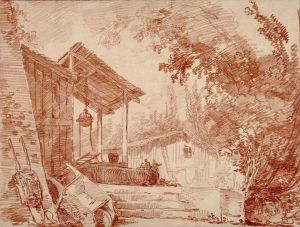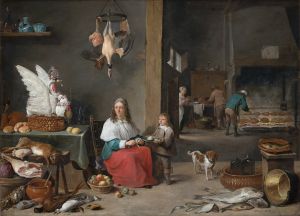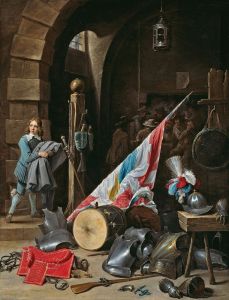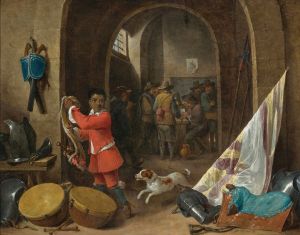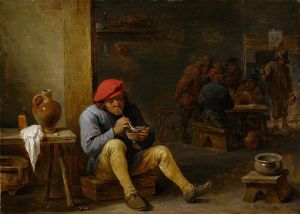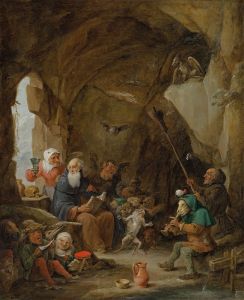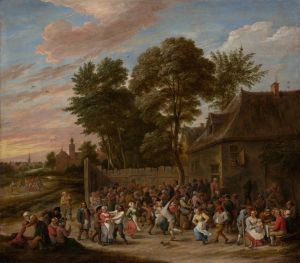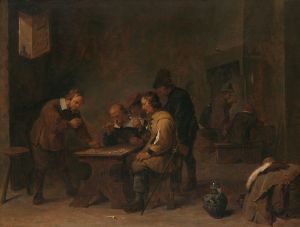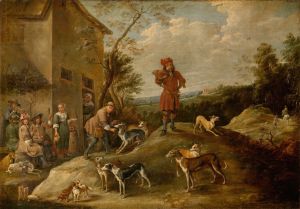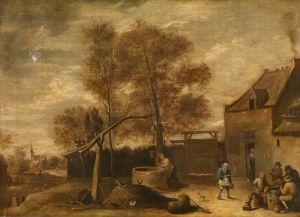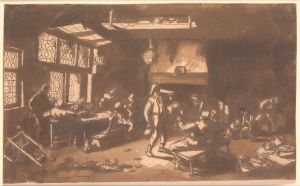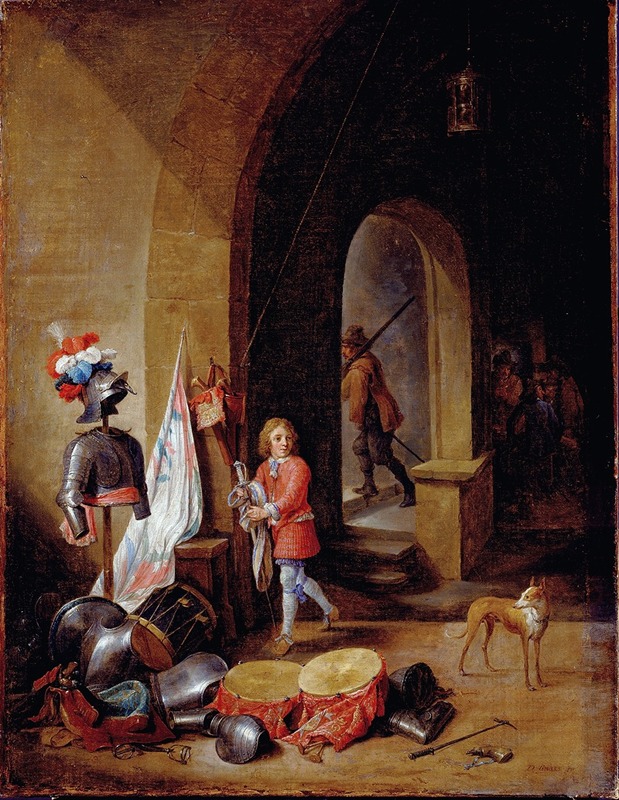
A Guard Room
A hand-painted replica of David Teniers The Younger’s masterpiece A Guard Room, meticulously crafted by professional artists to capture the true essence of the original. Each piece is created with museum-quality canvas and rare mineral pigments, carefully painted by experienced artists with delicate brushstrokes and rich, layered colors to perfectly recreate the texture of the original artwork. Unlike machine-printed reproductions, this hand-painted version brings the painting to life, infused with the artist’s emotions and skill in every stroke. Whether for personal collection or home decoration, it instantly elevates the artistic atmosphere of any space.
David Teniers the Younger was a prominent Flemish painter in the 17th century, renowned for his genre scenes, landscapes, and depictions of peasant life. One of his notable works is "A Guard Room," a painting that exemplifies his skill in capturing everyday life with a keen eye for detail and a touch of humor.
"A Guard Room" is a genre painting, a category that Teniers excelled in, which depicts scenes from everyday life. This particular work portrays the interior of a guard room, a common subject in 17th-century Flemish and Dutch painting. Guard rooms were spaces where soldiers or guards would gather, often depicted with a sense of disorder and camaraderie. These settings provided artists like Teniers with the opportunity to explore themes of leisure, duty, and the human condition.
In "A Guard Room," Teniers presents a lively scene filled with soldiers engaged in various activities. The composition is typically bustling, with figures interacting in a space cluttered with military paraphernalia. Teniers' attention to detail is evident in the depiction of armor, weapons, and other objects scattered throughout the room. The soldiers are shown in relaxed poses, some playing cards or dice, others drinking or smoking, capturing a moment of respite from their duties.
Teniers' use of light and color enhances the atmosphere of the painting. He employs a warm palette, with earthy tones dominating the scene, creating a sense of warmth and intimacy. The light is skillfully manipulated to highlight certain figures and objects, drawing the viewer's eye across the composition. This technique not only adds depth to the painting but also emphasizes the narrative elements within the scene.
The painting reflects Teniers' ability to blend realism with a touch of humor. The expressions and postures of the figures often convey a sense of joviality and camaraderie, inviting the viewer to engage with the scene on a personal level. Teniers was known for his ability to capture the subtleties of human interaction, and "A Guard Room" is a testament to this skill.
David Teniers the Younger was part of a family of artists, and his work was highly regarded during his lifetime. He served as the court painter to Archduke Leopold Wilhelm, the governor of the Southern Netherlands, and was instrumental in the development of the archduke's art collection. Teniers' influence extended beyond his own work, as he played a significant role in the art world of his time, organizing exhibitions and contributing to the spread of Flemish art across Europe.
"A Guard Room" is a fine example of Teniers' contribution to the genre painting tradition. It captures a slice of 17th-century life with authenticity and charm, showcasing the artist's technical prowess and his ability to convey the nuances of human experience. Today, Teniers' works, including "A Guard Room," are appreciated for their historical significance and their enduring appeal, offering insights into the social and cultural fabric of the time.






